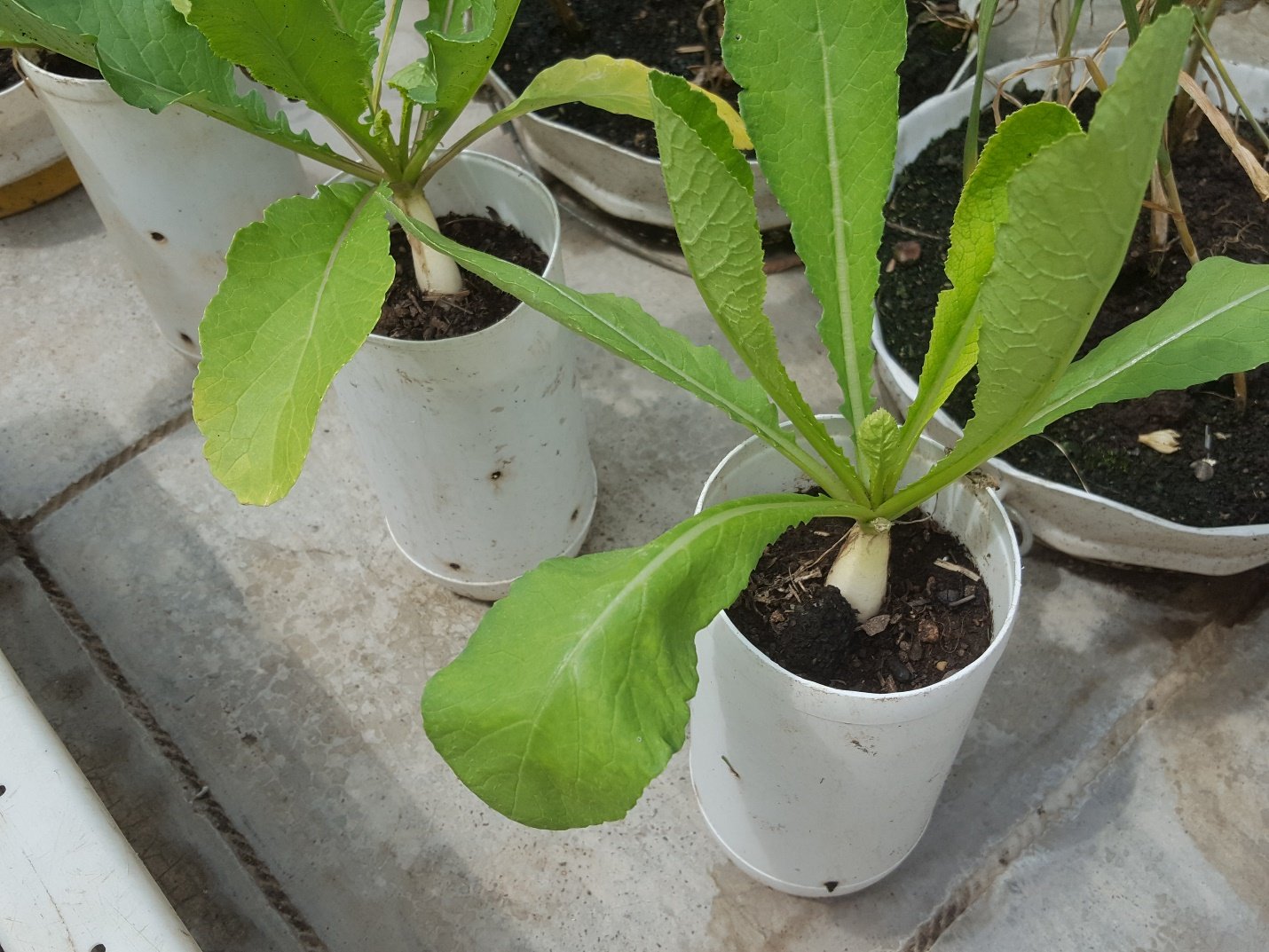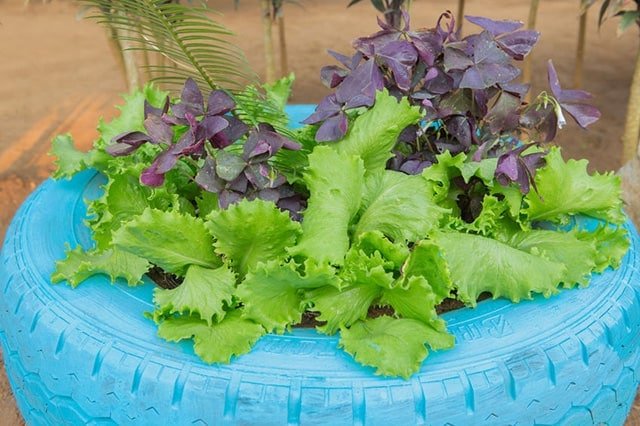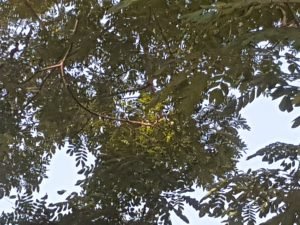अमंत्रमक्षरं नास्ति नास्ति मूलमनौषधम् ।
अयोग्यः पुरुषो नास्ति योजकस्तत्र दुर्लभः॥
This Sanskrit verse means, no sound/mantra is without any significance, no plant is without special properties; no person is unworthy. What is rare is the one who identifies the qualities and connects the dots.
Okkay, I can see that big questions mark. Yes, you are wondering what exactly this has to do with Brown leaf blog?
Yes, reason I quoted this verse is that there is a strong connection with this week’s topic.
You can also say “One person’s trash is another person’s treasure”.
Sure, I will end the suspense.
In nature, there is no concept of WASTE
Output of one system serves as input to some other system. Processes are cyclic. Resources are used and re-used, and the cycle goes on. So, there is no end and there is no waste.

Cyclic systems: Output of one system serves as input to some other system
Why our cities are drowned in waste?
What exactly changed?
Let’s see. First, we changed the systems from cyclic to linear.
Creation -> Usage -> Disposal.
We buy something, we use it and then we dispose it off i.e. we throw it away.
There is end to this and that end is called WASTE. Most of the material that we throw way, is collected and sent to the dump yard. If it is biodegradable, it rots, if not, then it lies and lies there for years to come.
When we changed the system from cyclic to linear, the problem started. And today condition is that, we are not able to cope with the waste that we create.
Recently, Mr. Devendra Fadanvis, chief minister of Maharashtra state announced that there is no space left in Maharashtra for any more dump yards. Condition in other states is not much different. In fact, world over, city planners and managers are struggling with the challenge of waste management.
Clearly, this use and throw policy is not working for us, any more.
Let’s take a step back and see how the cyclic system of nature has worked for so many years. Surplus too exists in nature. A tree produces seeds in large quantity because only some of them would ultimately germinate and help the species propagation. Majority of seeds produced by the trees might not get a chance to germinate. They might fall where conditions are not right.
But still they don’t create waste. They might not germinate but they do decompose. They degrade and go back to the soil. Even resources that are surplus in nature, are part of the cyclic process of nature.
Everything comes from the soil and everything goes back to the soil. That is the soil-to-soil principle in nature. We did not follow this principle and that’s why is the current situation.
What is the solution?
Now, our cities are the way they are. The built areas, infrastructure. It is not possible to turn the wheels back. At least we as individuals cannot bring about a sudden change in this infrastructure. Agreed!!
But then what best we can do? Why not mimic nature wherever possible?
First, we need to remove the word “waste” from our dictionary and from our thinking. Everything is a resource.
So, the things that are output of one system and the ones we used to throw out as “WASTE”, now become our RESOURCES.
Left-over vegetables with vendors
Everyday vegetables are brought into city. At the end of the day, we see many of the vegetables are left behind by the vendors. They rot by the roadside, giving foul smell, making area dirty.
What if those vegetables, the ones not consumable any more, go back to the soil?
Those vegetables, when decompose, will return nutrients. Our garden will benefit from them.
So, how do we go about it? Yes, going to a vegetable market with broom and basket and picking up the vegetables thrown by vendors in not at all comfortable way.
Why not strike a conversation with a vegetable vendor nearby or the one who comes to your lane with a cart? Let them know why you want their left-over vegetables. Let them know they are contributing to something great, they are helping in keeping the city clean through this small act. Occasionally, gift them flowers from your garden as a way of THANK YOU. Smile on their face? Well it would be your bonus.
Nirmalya
Nirmalya is the flowers, fruits, leaves, grains, that are offered to the god. Next, they become “nirmalya”. Age-old practice was to offer the nirmlaya to the river. Nirmalya being organic, used to easily decompose. So, that practice made sense in the past. Now, with almost all water blocked behind dam walls, rivers no longer have fresh water in them, except for 4 months of monsoon. They do not have enough Dissolved Oxygen(DO) to digest this organic matter.
How about diverting nirmalya from rivers to the soil? Convince your friends and family to donate nirmalya to you instead of offering it to the river.

Approach a temple nearby and offer to take away their nirmalya. If nirmalya goes in the river, it rots; it consumes already scarce dissolved oxygen from the river water. Instead if it goes in the soil, it nourishes it.
1-litre plastic bottles
Do you know you can cultivate radish and carrots in those 1-litre cold drink bottles that are tossed out in bins? It is especially a blessing for gardeners with space constraint. With these containers, you can grow these veggies in your balcony or even in the window-pane.

Idea courtesy- Shashikala Dagade, Pune. https://brownleaf.org/how-to-create-terrace-garden-part-7/

Idea courtesy- Shashikala Dagade, Pune. https://brownleaf.org/how-to-create-terrace-garden-part-7/
Leaky Buckets
Plastic bucket in the bathroom is useable as long we can keep water in it, right? What if it leaks or its a handle is broken?
Oh, don’t throw them away. They still can make a very good planter. An outlet needs to be made at the bottom of the plant container, anyway. Buckets are already leaky, so our job is done.
Do not throw away the bucket, instead donate it to a gardener friend. Or do not let your friend throw it away, instead use it in your garden. How’s that? 😊
Thremocol boxes, bamboo baskets from paan and fruit vendors too make very good containers. Bamboo baskets do not last long but are ideal to cultivate vegetables who have short span.

Observe old plastic buckets, thermocol trey and bamboo baskets used as planters
Same is the case with old, worn out car tires.

Courtesy: https://www.backyardboss.net/tire-planters-garden/
Empty egg cartons can be used to germinate the seeds. Usually, seeds are sowed in a small container. When seeds germinate and saplings are formed, they are transferred to the large container. Plastic or paper cups are usually used for this purpose. How about utilizing empty egg cartons? Their size is perfect. You get 6 to 12 containers in one-go. After use, when the carton gets soggy, it can be easily composted along with other wet waste.

Courtesy: http://www.pbs.org/parents/crafts-for-kids/egg-carton-seed-starts/
Egg-shells
Calcium is one of the important nutrients for plant growth. With lack or deficiency of calcium, the plant tissue at the tip of roots and young leaves does not properly grow. Also, the mature plant tissues wither faster if there is calcium deficiency.
Egg-shells are made of calcium carbonate. They, when added to plant-beds and container, provide much-needed calcium.
We have many egg burji carts in the city. So many eggs are used daily. Egg-shells just pile up in the corner or they are given to the municipal waste collection system. Either way, they are left to rot.
Why not borrow them from the cart owner? It is a WIN-WIN-WIN situation, for the egg-burji cart owner, for you and for your plants 😊
Concluding words
If we look around, we will find many resources easily available cheap or even free. With reuse, we can avoid or delay what is sent to the landfill. Re-use of resources is the key while living on the planet with finite resources.
| Resource | How to use | Source |
| Left-over vegetables | To add to compost | Vegetable vendors |
| Egg shells | To add to plants as source of calcium | Egg burji vendors |
| Nirmalya | To add to compost | Temples, neighbors |
| Empty bottles | To be used to grow radish and carrots | Hotels, restaurants, friends, family |
| Construction debris | To make plant-bed boundaries, pathways in the garden | Re-modelling of your friend’s/ neighbor’s house |
| Leaky buckets | As planters | Friends and neighbors |
| Thermocol boxes | As planters | Packaging from friends and neighbors |
| Old, worn out car tires | As planters | Junk shops, mechanic shops |
| Empty egg carton | Seed germinators | Home, friends and family |
Here is a quick reference list for you of various resource that can be re-used. I am sure you have many more ideas. Do share them in the comments below. Let’s make this list as comprehensive as possible. Let’s work together, let’s collaborate to make this world a better place than it already is.




This is an excellent post and it can be used as a reference as well.